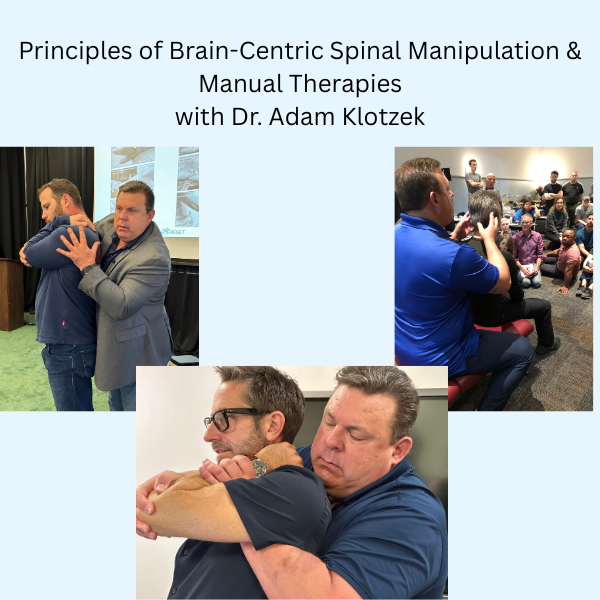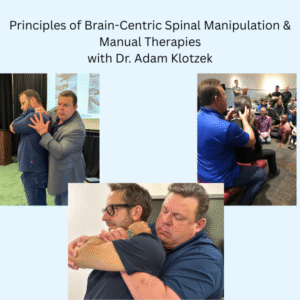🎯 Learner Objectives
Participants will:
• Analyze how OMT influences brain activity and autonomic pathways
• Diagnose somatic dysfunctions using neuro-sensory contributions (proprioceptive/visual)
• Refine techniques to optimize CNS engagement and promote neuroplasticity
• Apply sensorimotor integration principles for postural and structural alignment
• Translate current research into effective and individualized clinical care
🧬 Topics Covered
1. Neurological Foundations of Manual Therapy
• Hemispheric, aggregate, and localization brain models
• Sensory deprivation and joint mechanoreceptor physiology
• Neural modulation via “Fast Stretch” techniques
2. Visual, Vestibular & Proprioceptive Integration
• Sensory system roles in postural control
• Clinical signs of sensory mismatch or visual dominance
• Techniques to restore sensorimotor balance
3. Autonomic Regulation through Manual Techniques
• Parasympathetic enhancement via rib raising and suboccipital decompression
• Heart rate variability as a clinical metric
• Manual approaches to stress-related dysfunction
4. Brain-Centric Manipulative Techniques
• Cervical and rib coupling strategies
• Otolithic and canal-centric applications
• Upper thoracic and sacroiliac manipulations tailored to hemispheric dominance
5. Neuroplasticity & Pain Modulation
• Descending inhibitory pathways
• Central sensitization in chronic pain
• Manual therapy’s influence on cortical reorganization
6. Evidence Integration & Clinical Translation
• Functional neuroimaging case reviews (fMRI, EEG)
• Multimodal care for chronic pain and postural syndromes
• Immediate-use strategies for superior patient outcomes
✋ Format & Delivery
• 25 hours of hands-on practice and interactive lecture
• Neurological assessments and technique labs
• Small-group instruction for feedback and refinement
• Real-world clinical application through case studies
📈 Clinical Impact
• Diagnose hidden sensory integration dysfunctions with precision
• Use manual therapy as a neuromodulatory tool—not just structural alignment
• Improve patient outcomes in chronic pain, instability, and coordination disorders
• Support treatments with peer-reviewed evidence and physiological data


